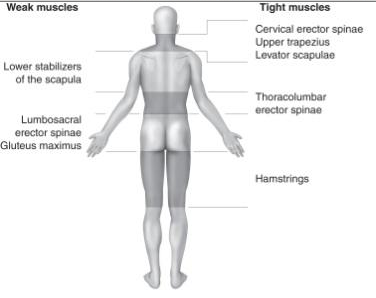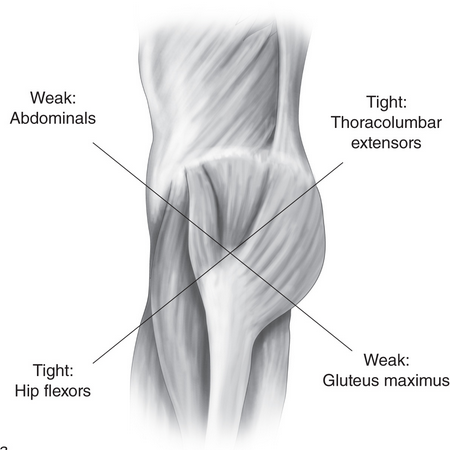Guide to the Best Core Exercise You're Not doing

There is an exercise you are ignoring that can solve your core and posture dysfunction. That exercise is the loaded carry, and you need to being doing it. First you need to know the WHY - as in why it's such a big deal, and second you need to learn the HOW - as in how to do it correctly. Here is your guide on the loaded carry:
Humor me for a second and follow the course of events below. Whether you’re a pro athlete, an aspiring athlete or a human who enjoys getting more fit, consider how much of the following is familiar to how your typical day unfolds:
- Roll out of bed and wonder what version of a pretzel you slept in that made your neck, shoulders, or low back feel stiff and sore.
- Sip your coffee while hunched over staring into your phone to see if anyone posted something life altering to Facebook.
- If you are a morning workout person this is the time when you would bang out some crunches - aka "hunchback makers".
- Now you are running late so you rush to your car only to slink down into what could easily be mistaken for an upright fetal position with a steering wheel to rest your hands on. You maintain this position for your entire commute.
- Pull up to work and find the parking spot closest to the front door in an effort to minimize the amount of time standing up straight and walking around like a human.

- Hustle into work and sit down at your desk in a chair that invites you again into what resembles a seated fetal position but this time with a keyboard to rest your hands on instead of a steering wheel. You maintain this position for your entire workday. Well...not your entire workday - you take a few breaks to peer into your phone, double and triple checking to be sure that if the solution to world hunger is posted on Facebook, you will be the first to catch it.
- Now it's time to hit the afternoon commute back in your car in you know what position...
- The commute home took you so long that it's time for dinner so you swing through the drive-through (this way you avoid standing and walking like a human again), grab your reward for the day and hurry home to binge watch the new season of House of Cards. The ideal position to do this in is of course seated on the coach, slumped over your food on the coffee table, shoulders rolled forward, upper back looking like a camel's hump with your head projected forward on the screen - this promotes the ideal shoveling action during consumption of your "nourishing foodstuffs" that were born from a drive-through window.
- After devouring several episodes of House of Cards along with whatever was in the paper sack of "food", you check your phone one last time. You take this step to be sure that you get just enough late night blue-light from your devices to ruin any chance you have of a restful night's sleep.inally, time for you to curl back up in that pretzel position that makes your neck, shoulders, or low back feel so stiff and sore.
Anything familiar there?
Repeating some version of that routine day after day is a lovely way to make it impossible for your postural and core musculature to function at a high level. Unfortunately, even when you target these bad habits and attempt to address them there is still a problem:
Expecting to eradicate all destructive aspects of that routine is impractical...life happens!
Problem & Solution
The problem is clear, but what is the solution? The solution is to train your core to be armed and ready for the insanity described above. One way to do exactly that is to pick heavy objects up, carry them, put them down and repeat. I know this is hard to believe but your body has a primal craving and is designed to lift and carry heavy things. Human evolution would have been a little tricky if we were a species with poor lifting/carrying biomechanics or structure.our slothful mind might try to tell you sitting on the couch is a better plan, but sub too much sitting for lifting/carrying and you’re going to have problems!
When you sit more and lift/carry less, the muscles that you need to be strong get weak. Other muscles or connective tissues that get forced to the rescue of the atrophied groups end up being overused, misused and super tight.Vladimir Janda was a pioneer in the crusade to link primitive or developmental movement patterns to rehab/training. Janda identified familiar combinations of tightness and weakness, and gave a name to these musculoskeletal patterns of dysfunction:



Any attempt you make to perform as an athlete, weekend warrior, or human while presenting with any version of Janda’s Crossed Syndromes will eventually end up in spoiled performance and/or injury.
You may not appreciate lifting or carrying heavy objects as training for your core or better posture, but you should. Think of your postural and core muscles as the frame of a sturdy lift or loaded carry. If they were suddenly turned off in the middle of lifting or carrying a heavy object, you would crumple to the ground.

LA Laker Julius Randle demonstrating a loaded carry variation
Planks should be part of your core training, but you need to include or progress to training your core while standing or ambulating. Last time I checked that is how humans typically function and perform.
Whether you are hoisting a heavy box up on a high shelf, sprinting off of the blocks in a track meet or dunking a basketball, your performance will suffer if you have neglected to train your core in standing or while walking.
Lifting and carrying heavy objects is a great way to train your core in standing or while walking. This will help you avoid postural and core dysfunction. Like anything else in training there are right ways and wrong ways to execute a lift or carry. The video below will show you how to lift and carry heavy objects the right way:
this exercise can be done with dumbbells if you don't have access to farmer walk bars.
Get some loaded carry variations into your program. Not only is it the best core exercise you're not doing, but it will help you offset the destruction you areoing by always being plugged into your phone, keyboard or steering wheel! Start with manageable loads and work towards heavier loads, once you have mastered the keys to lifting and carrying highlighted in the video above. You will perform better, feel better and be less susceptible to injury.
References:
Janda Syndromes. (n.d.). Retrieved from http://www.jandaapproach.com/the-janda-approach/jandas-syndromes/
Kresser, C. (2013, February 22). How Artificial Light is Wrecking Your Sleep and What to do about it. Retrieved from http://chriskresser.com/how-artificial-light-is-wrecking-your-sleep-and-what-to-do-about-it
Tim DiFrancesco, PT, DPT, ATC, CSCS is the Head Strength & Conditioning Coach for the Los Angeles Lakers and Founder of TD Athletes Edge, where he provides fitness, recovery and nutrition guidance to aspiring and professional athletes. For training advice, visit www.tdathletesedge.com and follow him on Twitter/Instagram through @tdathletesedge.
ABOUT THE AUTHOR

Tim DiFrancesco, PT, DPT spent 6 seasons as the Head Strength & Conditioning Coach of the Los Angeles Lakers and is the founder of TD Athletes Edge. He is nationally renowned for his evidence-based and scientific approach to fitness, training, nutrition, and recovery for athletes and fitness enthusiasts.
